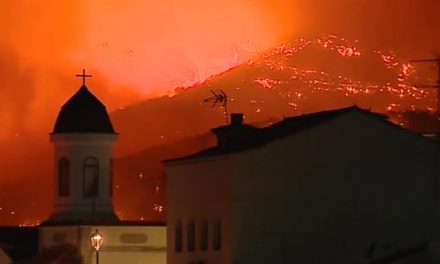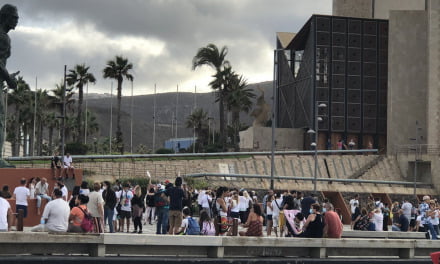Gran Canaria, Tenerife and La Palma remain at Alert Level 4; Fuerteventura, El Hierro and Lanzarote at Level 3. La Gomera moves to Level 3 at 00:00 on Monday, January 31. Covid-19 Occupancy levels of hospital beds on Tenerife, Gran Canaria and Lanzarote are still at very high risk levels; Fuerteventura and La Palma are at high risk; and La Gomera and El Hierro are currently at medium risk, keeping all the islands where they were except La Gomera, which rises from Level 2 to 3. 86.1 % of unvaccinated Covid patients admitted have had no previous pathologies, a remarkable figure when compared to the 18.5 % of vaccinated population admitted with no known prior conditions.
 The Ministry of Health today updated the Health Alert Levels following the epidemiological report of the General Directorate of Public Health with consolidated data as of January 26.
The Ministry of Health today updated the Health Alert Levels following the epidemiological report of the General Directorate of Public Health with consolidated data as of January 26.
The report specifies the evolution of health indicators due to COVID-19, which places the island of La Gomera at Alert Level 3 due to the unfavourable evolution of their epidemiological indicators.
The rest of the islands maintain their same levels of alert for at least one more week. This means that Tenerife, Gran Canaria and La Palma remain at Alert level 4; Fuerteventura, El Hierro and Lanzarote (where La Graciosa is included epidemiologically) remain at Level 3.
The change in level for the island of La Gomera will come into effect at 00:00 hours next Monday, January 31 (on the night of Sunday to Monday) and will be subject to periodic revaluations.
In the Autonomous Community as a whole, between 18th and 24th January, 17,026 new cases of COVID-19 have been confirmed, a reduction of around 47.8% in the daily average of new cases compared to last week. A 49.2% decrease in the Accumulated Incidence at 7 days (AI7) in the Canary Islands, sees a fall from last week’s weekly average of 1,539.4 cases per 100,000 population, to 782.5/100k this week.
The only increase has been observed on El Hierro, increased by 26.2%, while the island saw the greatest drop in incidence at 7 days was Lanzarote, which fell by 63.9%.
However, all the islands are still at a very high risk levels for this indicator, as is the case with the AI7 among people over 65 years of age and in the AI14 which indicates very high risk on all the islands, although for both indicators there were decreases of 39% and 21.4%, respectively.
Healthcare indicators
Daily average numbers of occupied conventional hospital beds increased by 17.3% compared to the previous week and remains at high risk. Covid Occupation on Tenerife, Gran Canaria and Lanzarote is at very high risk; on Fuerteventura and La Palma high risk; and La Gomera and El Hierro at medium risk.
The number of occupied ICU beds maintains an upward trend, increasing by 8.6% compared to last week’s evaluation. The percentage of Covid ICU occupation for the whole of the Archipelago is now 22.3%. Tenerife and Gran Canaria are at very high risk, Fuerteventura remains at medium risk, while the rest of the islands maintain controlled circulation.
Median age
Of the total number of people hospitalised for COVID-19 in the last 30 days, the median age is 71 years and 65 years for those admitted to the ICU; with all of them over 16 years of age; while the median age of those who died in the last 30 days is 80 years, with a range that covers 44 to 90 years.
41.2% of people admitted to ICU critical care units, diagnosed during the last 30 days, had not received the complete vaccination schedule, a high percentage if we take into account that only 18.5 percent of the population over 5 years of age has not yet been vaccinated.
81% of people admitted for COVID and diagnosed in the last 30 days had no previous pathologies. This percentage increases in unvaccinated patients, in whom 86.1% had no other known pathologies.













